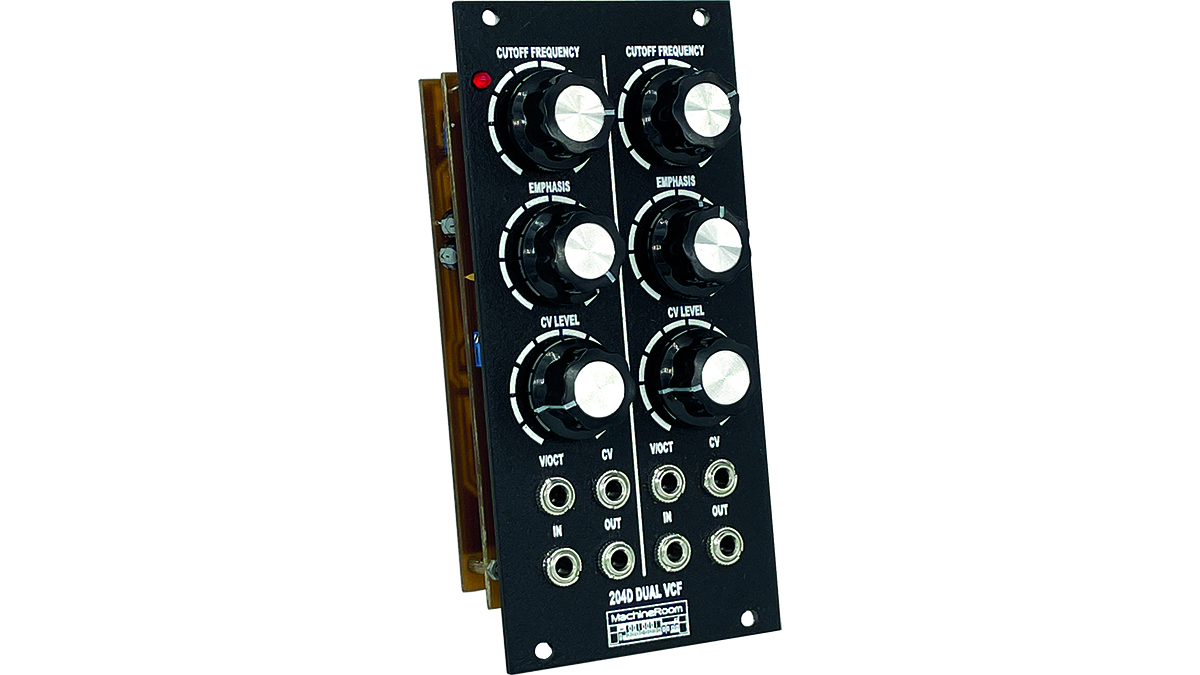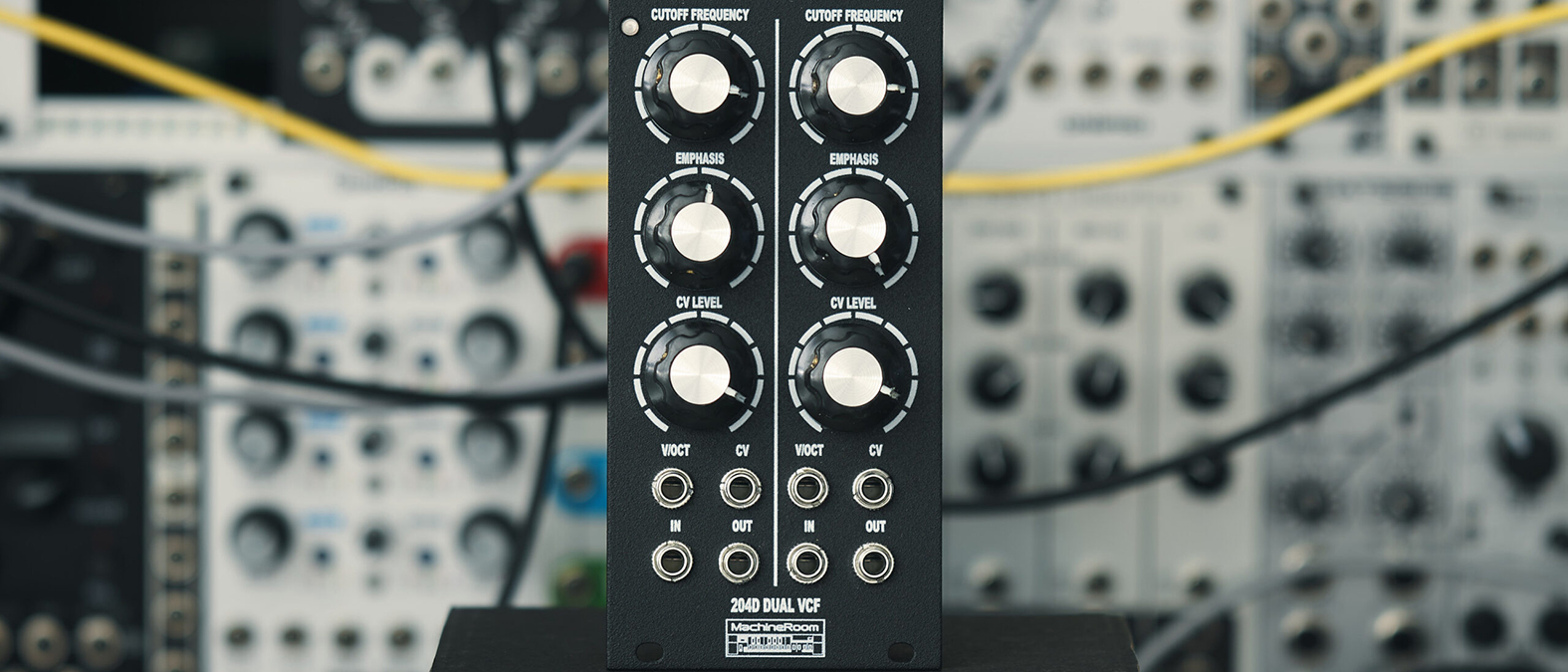MusicRadar Verdict
If you want a classic ladder filter that does it well, plus has a few extra tricks up its sleeves, you won’t go wrong with the 204D Dual VCF.
Pros
- +
Authentic Minimoog-style sounds.
- +
Many possibilities for sound design.
Cons
- -
Power input may foul on some cases.
MusicRadar's got your back
Machine Room 204D Dual VCF: What is it?
There is a constant hunger for sounds of days gone by. The unmistakable sound of a Minimoog is pretty high up this list and many companies offer their take on the 24dB per octave ladder filter. So, what makes the Machine Room take on it stand out?
Firstly, the physicality of the module. It has a distinctly vintage look and feel, with a plain black fascia and silver capped black knobs. The labelling is similarly simple and legible. No wacky graphics to decrypt. It’s also handbuilt rather than factory assembled by robots.
It’s refreshing to find a module where the components are visible and recognisable. The only thing to note here is to check clearance with your case as I found the power connector just fouled the rails in one of mine, although it was a perfect fit in the others.

Machine Room 204D Dual VCF: Performance and verdict
The 204D Dual is, as you can guess, a dual filter. Both are identical, with the same layout, patch points and features. Both offer the creamiest tones and sound wonderfully retro. At least in basic form, as there is a lot you can do with this module. Resonance can cover the delicate to the insane, on to self-oscillating, with a volts per octave input to make this melodic. The output of the self-oscillation is rich and buttery, rather than the frantic squealing you can get.
CV control for cutoff has an attenuator control, which works as expected. All the controls operate really smoothly, with good amounts of resistance, making it easy to dial in the exact setting you want.
These factors alone would merit a high score but the addition of a second filter makes this an exceptional tool for sound design. You can set it up as a stereo device, feeding the two outputs to left and right. Maybe throw in some modulation for stereo field effects and that would be great but there’s more that can be done.
Sending the output of filter one into the input of filter two gives a serial filter setup. Some diligent use of varying modulation can create some otherworldly sounds that, while demonstrating an experimental edge, remain controllable and tameable.
You can create some beautiful drone-like tones too. Crank both resonances to full, meaning you need patch no input. Have the first filter’s output modulate the second one. Split the output of the first with a stackable or mult, then feed the copy into the second filter’s input. Playing with the cuttoff knobs of both to set pitch produces an instantly playable drone machine, with just one module.
Top all of this off with the fact that the filters are both buttery smooth at one end to rapid fire and snappy at the other end and you have a module that can cover a broad base of use cases, from the overtly retro and vintage, to the modern dirty and gritty, and everything in between.
MusicRadar verdict: If you want a classic ladder filter that does it well, plus has a few extra tricks up its sleeves, you won’t go wrong with the 204D Dual VCF.
Machine Room 204D Dual VCF: Hands-on demos
MachineRoom
Machine Room 204D Dual VCF: Specifications
- Two discreet ladder filters, Self-oscillating; CV, v/oct, in and out for each, Stereo.
- CONTACT: Machine Room
“We were arguing a lot and we were miserable”: How Green Day exceeded expectations with their most ambitious song
"There’s plenty for us guitarists to learn – and ‘less is more’ is the overriding lesson": how to play like George Harrison on The Beatles' Abbey Road
“They didn’t like Prince’s bikini underwear”: Prince’s support sets for the The Rolling Stones in 1981 are remembered as disastrous, but guitarist Dez Dickerson says that the the crowd reaction wasn’t as bad as people think










